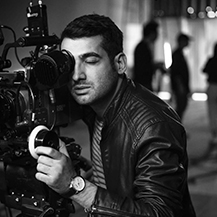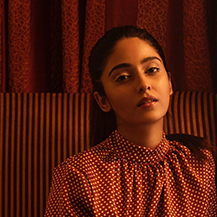Mastering Extreme Close-Up Shots: Tips, Tricks, and Examples

In this guide, we’ll explore ECU shot definitions, examples from famous films, and practical tips for capturing these shots effectively. By the end, you’ll have the tools and inspiration to create stunning close-up portraits and impactful visuals.
What Is an Extreme Close Up Shot or ECU in Film?
For example, an ECU might capture just the eyes of an actor, emphasizing their emotions or drawing attention to subtle changes in expression. Another example is focusing on an object, like a wedding ring, to signify its importance in the storyline.
Why Are ECUs Effective?
ECUs are not just about zooming in; they serve a critical purpose in storytelling. By removing distractions and centering the viewer’s attention, ECUs can:
- Heighten emotional impact.
- Reveal important plot details.
- Create suspense or dramatic tension.
For a broader understanding of shot types and their purposes, check out this guide toward camera shots, frames, and sizes.
Examples of Extreme Close Up Shots in Famous Movies
- Quentin Tarantino’s “Kill Bill” Series: The extreme close-up of The Bride’s eyes conveys determination and fury, emphasizing her drive for revenge.
- Sergio Leone’s Westerns: In films like “The Good, The Bad, and The Ugly,” ECUs of characters’ eyes heighten tension during standoffs.
- “The Social Network”: The ECU of Mark Zuckerberg’s computer screen highlights the intensity and focus of coding pivotal moments.
How Directors Use ECUs
Directors use ECUs to draw the viewer’s attention to specific details, creating a sense of intimacy or urgency. For instance, an ECU of a character’s trembling hands can subtly convey fear or hesitation without dialogue, providing a visual cue that resonates with the audience on an emotional level. This approach allows filmmakers to communicate complex feelings or foreshadow critical moments in the narrative. Additionally, ECUs can heighten tension by focusing on objects, such as a ticking clock or a character’s fidgeting fingers, emphasizing their psychological state or the gravity of the scene.
Best Techniques for Capturing Extreme Close Ups
Camera Setup
To achieve stunning ECUs, choosing the right camera and lens is crucial. Prime lenses with a shallow depth of field are often preferred for their ability to isolate the subject and create beautiful background blur. Using a DSLR or mirrorless camera with a macro lens can help capture intricate details with precision.
Lighting
Lighting plays a significant role in ECUs, as it highlights textures and emphasizes the subject’s features. Soft, diffused lighting can create a natural look, while dramatic lighting setups can add intensity to the shot. Experiment with angles to find the perfect balance.
Focus and Stability
Maintaining sharp focus is essential in ECUs, as even minor blurs can distract the viewer. Use a tripod or stabilizer to keep the camera steady and focus on specific details, like the subject’s eyes or hands.
You can also use tools like our Kodak and Fuji Film Frames that help you create cinematic shots.
Kodak and Fuji Film Frames
How to Use Close Ups Effectively in Videos
Framing the Shot
Proper framing ensures the viewer’s attention is drawn to the most important detail. For instance, an ECU focusing on the eyes can convey emotion, while one on the lips can highlight dialogue or subtle expressions. The composition should guide the viewer’s gaze naturally.
Editing and Post-Production
Enhance ECUs during post-production by adjusting contrast, brightness, and sharpness to make the subject stand out. Tools like Optic FX can add unique visual effects to elevate the shot’s impact.
How Extreme Close Up Shots Enhance Storytelling
-
Emotional Impact
Extreme close-ups evoke strong emotions by isolating critical details that might go unnoticed in wider shots. A trembling hand, a single tear, or the flicker of an eye can speak volumes without words.
Story Elements
ECUs can reveal significant story details, such as a key hidden in plain sight or a character’s inner turmoil. By zooming in on these elements, filmmakers can subtly convey information that enriches the narrative.
Conclusion
Take time to experiment with different techniques, lenses, and lighting setups to find your unique approach to ECUs. Don’t forget to enhance your shots during post-production with tools and effects like those available through Optic FX or Kodak and Fuji Film Frames v2.
With practice and creativity, extreme close-up shots can become a defining element of your visual storytelling toolkit. Start experimenting today and see how these powerful shots can transform your work!







